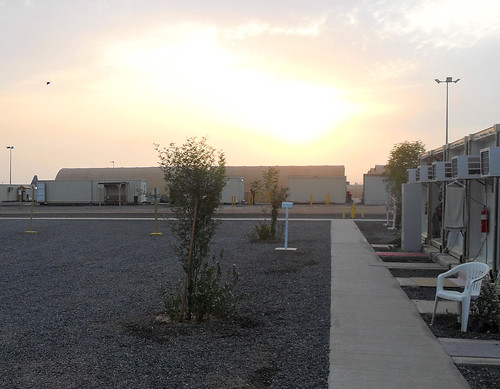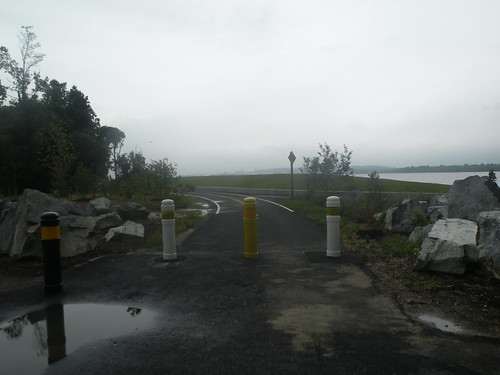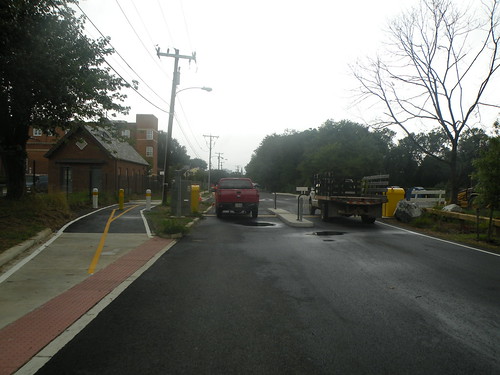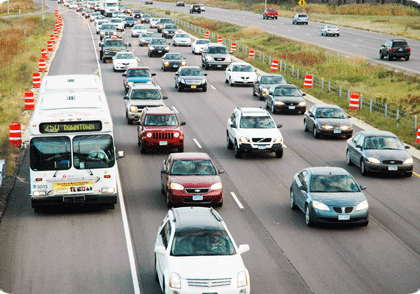In the grand tradition of Tales From The Sharrows, it is my honor to bring you this unofficial subsidiary post. Perhaps it's the heat getting to me, or something about all this dust and sand, but here it is.
Nominally, this is a US Navy "Expeditionary Base", but there are so many other people from all the services, plus lots of contractors, that you really can't call it just a Navy base. Yeah, it's near the water, but not ON the water. It is, however, near the airport...so close you can smell the helicopters taking off and landing.
Security is pretty lengthy to get into base, as one can expect given this part of the world, not to mention that Somalia (in all its lawless glory) is almost within spitting distance. But once you're on base, you have just about everything you need here. Mess hall, showers, gym, coffee shop (open 24/7 at that). And an Exchange if you need to buy toiletries because the airline lost one of your bags (since recovered, but not until after spending $33 on "essentials").
There's even a suburb....Cluville. Dunno if that's because of all the clues to where people live here, or some super-secret Certified Likeness Unit project, but Cluville has a laundry shop, a mini-mart, and the MWR Internet center. It's also probably the only suburb in the world where you can get DC-style population density with a FAR less than 0.5.

BTW, it's dusty here. Photo by US Army Africa.
The living units aren't too bad. On the outside, they look like cargo containers, but inside there's enough room for 2 beds (or if you're an unlucky low-ranking junior sailor/soldier/airman/marine, 3 beds), adequate air conditioning, and some lights and lockers.
It's also one of the few places in the world where you'll see more pavement for pedestrians than you will for vehicles. Virtually every road/driving space on base is gravel. And we have 2 bus routes: the Blue Route and the Red Route. They look to be 15-20 passenger "mini-buses", but if you like vehicles it's your best chance for a ride since there are almost no private cars on base.
This being the desert, it's pretty dry. Except last night. It rained. A whole half-inch. But it was enough to turn dust into mud that lasted into this morning. I heard this was only the 3rd time it's rained this year.

It sorta looked like this. Photo by Flickr user strukanb.
It was also a brief respite from the 108F temperature we had yesterday. Think we only hit 107F today...it's a cooldown!
Signing off. Here for another day or so before I catch a ship to go bust some pirates. I wonder if it's dusty out there too?

Did I mention it's dusty here? U.S. Air Force photo.







